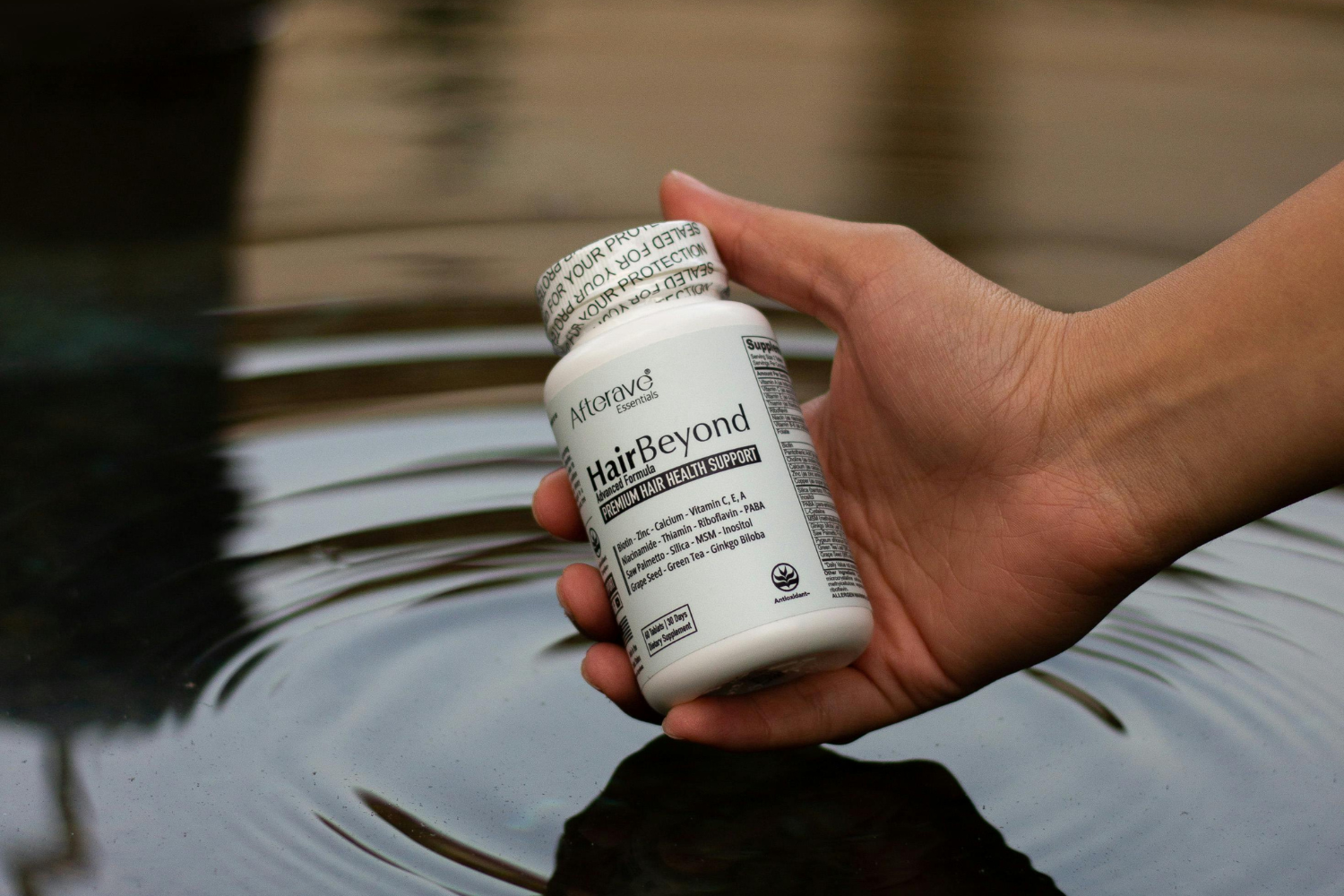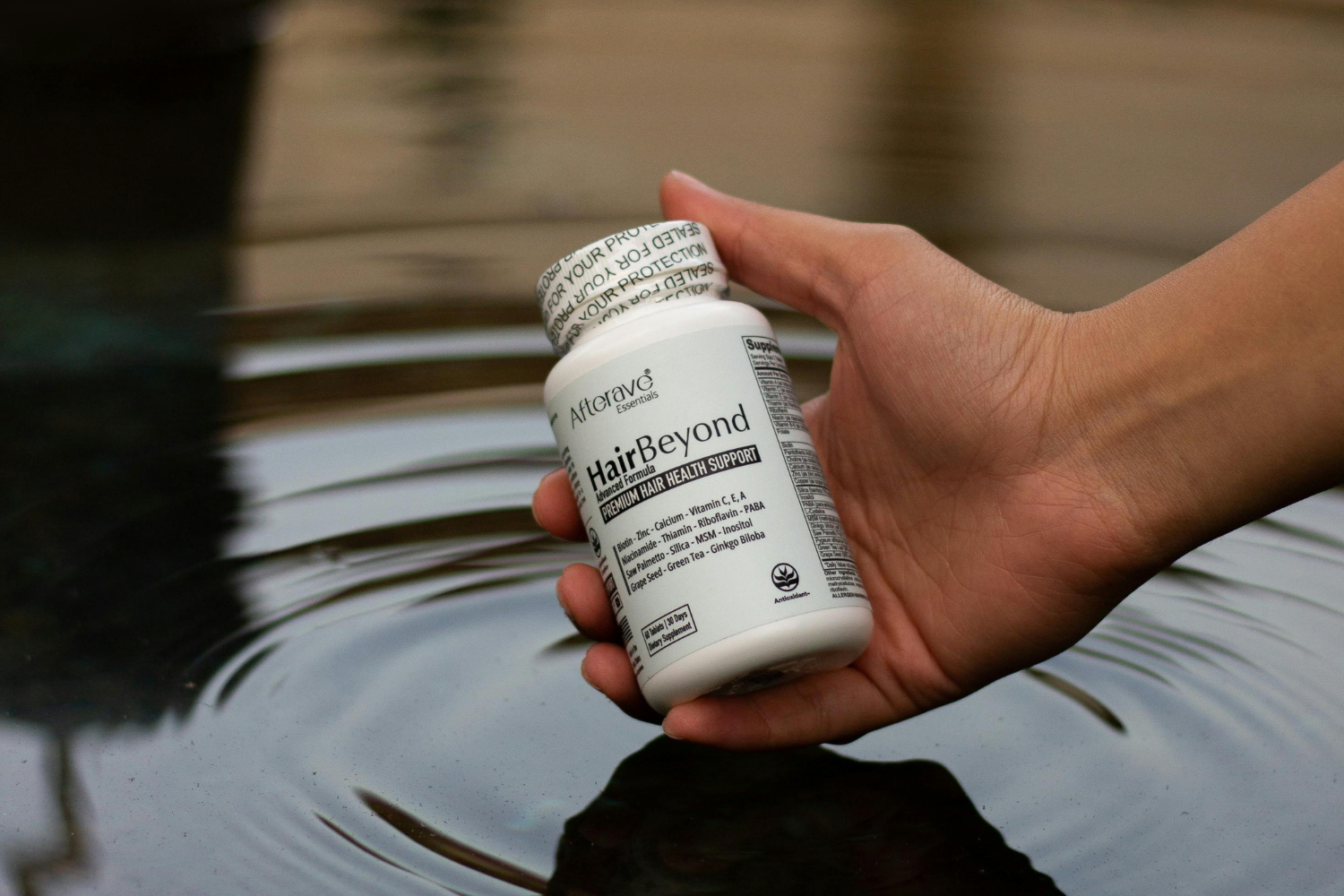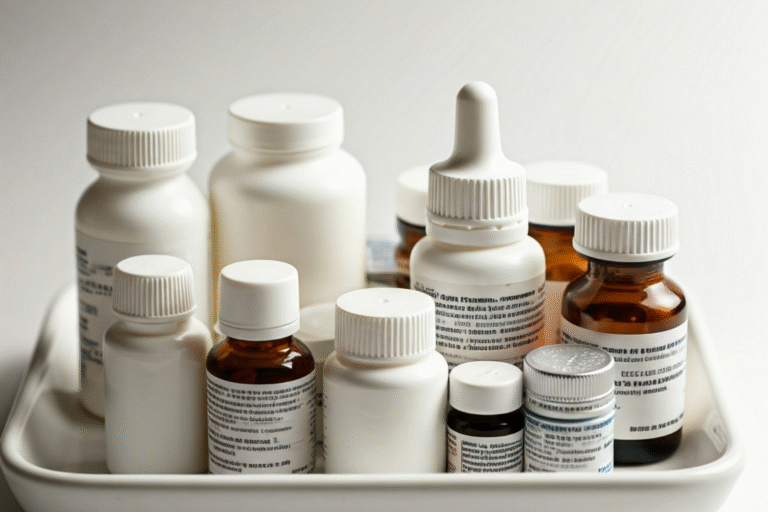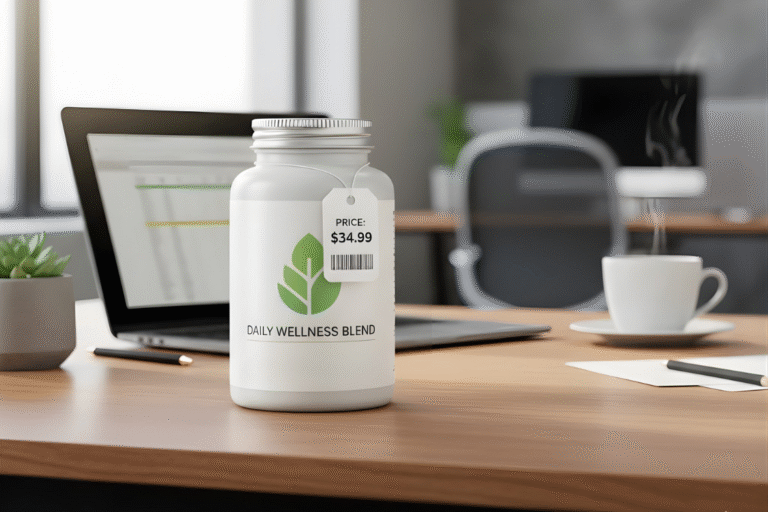Choosing the right supplement bottle caps and seals is a critical step in maintaining product safety, extending shelf life, and meeting industry compliance standards. Improper cap seal selection can lead to product degradation, contamination, or reduced barrier properties, especially for sensitive items like vitamins, liquid products, and lotions. In the packaging industry, selecting the appropriate materials, liners, and closures ensures that plastic bottles, PET, or HDPE containers stay well protected during storage and shipment.
This guide breaks down the various types of caps, seal styles, and liner materials, highlighting key factors such as moisture control, air exposure, and compatibility with different products. Understanding these options for businesses in pharmaceuticals, food, and nutraceuticals helps create secure, high-quality packaging suited for a wide range of applications.
Why Choosing the Right Cap and Seal is Important
Selecting the right cap and seal protects your product from contamination, moisture, and air exposure. For plastic bottles used in nutraceuticals, pharmaceuticals, or food industries, the right seal helps maintain product safety and keeps the contents well protected throughout shipping and storage.
The proper closures, cap liners, and seal materials also ensure that the packaging meets industry standards and supports sensitive supplements with specific barrier needs. Businesses that focus on quality packaging can also strengthen consumer confidence and reduce the risk of product returns or safety issues.
Here’s why choosing the right cap and seal is crucial:
- Ensures product safety and prevents contamination from external elements like dust, bacteria, and spills
- Maintains freshness and extends shelf life through strong barrier properties that block out air and moisture
- Meets FDA and industry compliance standards, especially for supplements that require tamper resistance or child safety features
- Enhances brand trust and customer satisfaction by showing that the product is secure, safe, and handled with care

Types of Caps for Supplement Bottles
Supplement packaging comes in a variety of shapes, sizes, and styles. Choosing the right lid depends on the type of product, the target audience, and the required protection level. Each cap type serves a different purpose in both function and compliance.
Screw Caps
Screw caps are the most commonly used option for supplement bottles. They twist on and off easily, making them simple for consumers. These closures are cost-effective and suitable for a wide range of plastic containers, including PET and HDPE bottles.
Screw caps often pair with foam liners or cap liners to improve the seal and help protect the contents from moisture and air exposure. They are best suited for powders, capsules, and tablets that don’t require special handling or dosing.
Flip-Top Caps
Flip-top caps are popular for supplements that need controlled pouring or frequent use. These caps allow consumers to open and close the container quickly without removing the entire lid, reducing the risk of spills. They’re often used for powders and granulated supplements, and they work especially well with protein powders, pre-workouts, and greens powders. Flip-tops are a convenient option that supports both function and ease of use.

Child-Resistant Caps (CRC)
Child-resistant caps, or CRCs, are designed to make it difficult for children to open the container, reduce the risk of accidental opening, and may be required for certain product types. These caps are often necessary for supplements with higher potency or those with potential health risks if misused. CRCs are designed to meet regulatory safety guidelines when required, particularly for certain products under the Poison Prevention Packaging Act. They typically include push-and-turn or squeeze-and-turn mechanisms, making them safer for home storage.
Tamper-Evident Caps
Tamper-evident caps provide visible signs if a container has been opened or altered. These caps are crucial for maintaining consumer trust and commonly used to support regulatory compliance and consumer safety, especially for products where tampering risk is a concern. A broken seal or visible damage alerts customers to possible contamination, allowing them to make safer choices. Tamper-evident closures are ideal for any product where product safety and verification are a top priority.
Dropper Caps & Pump Caps
Dropper caps and pump caps are typically used for liquid products like tinctures, oils, and liquid vitamins. These closures allow for controlled dispensing, which is useful for supplements that require precise serving sizes. Pump caps are also useful for lotions and topical applications. These types of caps work well with plastic and glass containers, offering clean dispensing and helping to avoid spills or waste. Their design helps maintain product integrity while supporting ease of use.

Types of Seals for Supplement Bottles
Just like caps, choosing the right seal is essential to keep your product safe, fresh, and protected. Different seals offer different levels of barrier protection and are suited for various applications across the supplement and pharmaceuticals industries.
Induction Seals (Heat Seal Liners)
Induction seals create an airtight and tamper-evident barrier by using heat to bond a liner to the top of the container. This type of seal requires an induction sealing machine, which uses electromagnetic energy to activate the seal. It is commonly used for plastic bottles and is known for preserving the potency of sensitive products and preventing leaks. Induction seals are ideal for liquid products and supplements that need maximum protection from moisture, air, and contamination.
Pressure-Sensitive Seals
Pressure-sensitive seals are liners that stick to the bottle opening when the cap is tightened. These seals don’t require heat or machines, making them a cost-effective solution for smaller operations. They are best suited for dry supplements such as powders and capsules, offering a clean seal that helps keep out dust and light moisture. Although not as secure as induction options, they provide a simple way to ensure the product stays well protected during storage and shipping.
Heat Shrink Bands
Heat shrink bands are sleeves of shrink-wrap film placed over the cap and neck of the bottle. When heat is applied, the band tightens to form a visible, tamper-evident barrier. These seals offer extra security and are often used to meet safety regulations or build consumer trust. Shrink bands can also be printed for branding, adding a layer of customization to plastic or PET containers. They work well alongside other closures to enhance both protection and appearance.
Foam Liners
Foam liners are basic cap liners placed inside the lid to help prevent leaks and block out moisture. While they don’t offer strong tamper resistance, they are often used for general protection in plastic bottles with screw caps. Foam liners are a popular option for budget-conscious businesses looking for moderate sealing strength. They are commonly used for less sensitive products that don’t require full airtight sealing but still need to maintain product integrity during transit.

How to Choose the Best Cap and Seal for Your Supplement Bottle
Selecting the right combination of caps and seals depends on several important factors. Each product has different needs when it comes to protection, compliance, and consumer expectations. Understanding your supplement’s unique requirements will help you find a solution that keeps the contents safe and supports your brand’s goals.
Type of Supplement – Liquid, Powder, or Capsule?
Different products need different packaging. Liquid products like tinctures or oils are best paired with dropper caps, pump caps, and induction seals to prevent spills and leaks. Powders and capsules often use screw caps or flip-top caps, along with foam liners or pressure-sensitive seals. Choosing a seal with the right barrier properties helps preserve freshness and reduces the chance of product degradation.
Regulatory Compliance – Does it Require Child-Resistant or Tamper-Evident Features?
Many industries, especially pharmaceuticals and nutraceuticals, require packaging that meets specific safety rules. For products that carry risk due to high potency, child-resistant caps (CRC) are often mandatory. Tamper-evident seals and heat shrink bands are also crucial for proving the product has not been opened or altered, helping you meet FDA and other regulatory standards.
Consumer Experience – Easy to Open While Ensuring Security?
A good package should be secure, but also simple for the end user to handle. Screw caps, flip-tops, and pressure-sensitive seals offer ease of use while still providing basic protection. Tamper-evident features and foam liners give added assurance without making the bottle too hard to open. The right design improves satisfaction and helps build brand loyalty.
Cost Considerations – Balancing Budget with Product Protection
Your budget matters, but so does keeping your product safe. Foam liners and pressure-sensitive seals are commonly used in cost-effective packaging solutions. On the other hand, induction seals and CRC caps offer stronger protection but require more investment in equipment or materials. Think about long-term value and how the seal and cap affect your product’s shelf life, quality, and consumer trust.
Common Mistakes to Avoid
Picking the wrong caps and seals for your supplement bottles can lead to problems that affect your product’s safety, brand image, and overall consumer experience. Poor choices can cause leaks, reduce shelf life, or fail to meet industry requirements. In the packaging industry, understanding compatibility, liner types, and user needs is essential for building packaging that performs well across different applications.
Avoid these common mistakes:
- Choosing a cap that’s hard to open or leaks, which can frustrate users and cause spills
- Ignoring tamper-evidence leading to lower consumer confidence and potential compliance issues
- Selecting a seal that doesn’t work with the supplement type, such as using the wrong liner for liquid products
- Not considering branding and consumer perception, which can affect how your bottle looks and feels on the shelf
Where to Source Quality Caps and Seals
Finding reliable suppliers for supplement bottle caps and seals is key to developing a strong packaging solution. A trusted partner helps you stay on top of compliance, maintain product integrity, and reduce long-term risk in your supply chain. It’s vital to evaluate both quality and cost when choosing your source.
Recommended Suppliers and Manufacturers
Look for suppliers with experience in the nutraceuticals, pharmaceuticals, or food industries. They should offer a wide variety of closures, seals, and liners suited for plastic, PET, or HDPE containers. Working with manufacturers that understand protective seal needs and offer a range of shapes, styles, and materials can help ensure your product stays well-protected and compliant.
Bulk Purchasing vs. Small Orders
Bulk purchasing is more cost-effective for more extensive operations, especially when producing at scale. It helps lower unit costs and ensures consistency across packaging. Small orders, on the other hand, are better for product testing or limited runs. Choosing the right order size depends on your production goals, available storage, and how quickly you plan to scale.
Testing and Quality Assurance Before Full Production
Before committing to a full production run, always test caps, liners, and seals to make sure they are suitable for your contents. This helps identify any compatibility issues and ensures the seal provides proper barrier protection. Testing can help identify issues with compatibility and durability and supports efforts to meet applicable packaging standards. Skipping this step increases the risk of product degradation or consumer complaints.

Final Thoughts on Selecting the Right Cap and Seal for Supplement Packaging
Choosing the correct supplement bottle caps and seals is essential for supporting product quality from production to customer delivery. Every detail—from the type of cap and liner material to the proper seal—plays a role in keeping your supplements stable, compliant, and appealing to consumers.
Making informed decisions helps avoid common packaging pitfalls while improving long-term efficiency. Start by identifying the needs of your specific product, then move forward with trusted suppliers, proper testing methods, and packaging that supports both brand goals and safety requirements.
Frequently Asked Questions
What is the best seal for supplement bottles to prevent leaks?
Induction seals are commonly used for their airtight bond and a strong barrier against leaks and contamination.
Do I need a tamper-evident cap for all supplement products?
Tamper-evident caps are not required for all products but are highly recommended for safety and regulatory compliance.
What types of caps are best for liquid supplements?
Dropper caps and pump caps offer accurate dispensing and are ideal for oils, tinctures, and other liquid supplements.
How do I know which cap liner is suitable for my supplement?
Liner selection depends on the product’s form—liquids require higher barrier liners, while powders often use foam or pressure-sensitive options.
Where can I buy caps and seals for plastic supplement bottles?
Many B2B suppliers offer a variety of cap and seal options for PET, HDPE, and other plastic bottles through bulk and custom order solutions.
References
- U.S. Consumer Product Safety Commission. (1970). Poison Prevention Packaging Act Business Guidance. https://www.cpsc.gov/Business–Manufacturing/Business-Education/Business-Guidance/PPPA
- U.S. Food and Drug Administration. (2020). Container Closure Systems for Packaging Human Drugs and Biologics. https://www.fda.gov/regulatory-information/search-fda-guidance-documents/container-closure-systems-packaging-human-drugs-and-biologics
- U.S. Food and Drug Administration. (2024). Current Good Manufacturing Practices (CGMPs) for Food and Dietary Supplements. https://www.fda.gov/food/guidance-regulation-food-and-dietary-supplements/current-good-manufacturing-practices-cgmps-food-and-dietary-supplements
- U.S. Food and Drug Administration. (2024). Dietary Supplements. https://www.fda.gov/food/dietary-supplements
- U.S. Pharmacopeial Convention. (2021). USP General Chapter <661> Plastic Packaging Systems and Their Materials of Construction. https://www.uspnf.com/sites/default/files/usp_pdf/EN/USPNF/revisions/661_rb_notice.pdf




